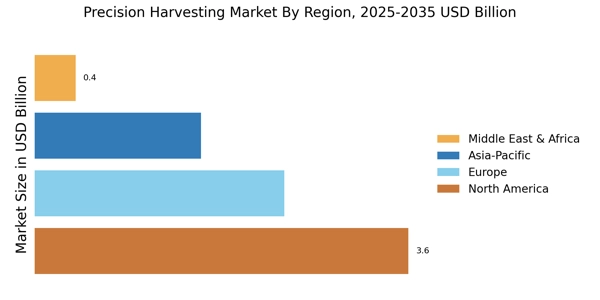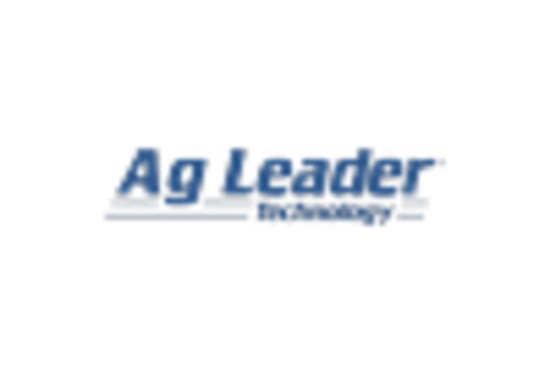Labor Shortages in Agriculture
Labor shortages pose a considerable challenge in the agricultural sector, thereby impacting the Precision Harvesting Market. With a declining workforce willing to engage in manual labor, farmers are turning to automation and precision harvesting technologies to maintain productivity. The market for agricultural robots is projected to grow at a compound annual growth rate of 25%, highlighting the shift towards mechanization. This trend not only addresses labor shortages but also enhances efficiency and reduces operational costs, making precision harvesting an attractive solution for modern farmers.
Government Support and Subsidies
Government initiatives and subsidies play a crucial role in shaping the Precision Harvesting Market. Many governments are recognizing the importance of advanced agricultural practices and are providing financial support to encourage the adoption of precision harvesting technologies. This support can take the form of grants, tax incentives, or research funding, which collectively stimulate market growth. For instance, funding for agricultural innovation has increased by 15% in recent years, indicating a strong commitment to enhancing agricultural productivity through precision harvesting. Such government backing is likely to bolster the market and encourage further advancements.
Increased Demand for Food Production
The Precision Harvesting Market is experiencing heightened demand due to the necessity for increased food production. As the global population continues to rise, the need for efficient agricultural practices becomes paramount. Precision harvesting technologies enable farmers to optimize yield while minimizing waste. According to recent data, the agricultural sector is projected to grow by approximately 3.5% annually, indicating a robust market for precision harvesting solutions. This growth is driven by the need to produce more food on limited arable land, thereby enhancing the relevance of precision harvesting in modern agriculture.
Advancements in Agricultural Technology
Technological innovations are a key driver in the Precision Harvesting Market. The integration of advanced technologies such as GPS, IoT, and machine learning has revolutionized harvesting practices. These technologies allow for real-time data collection and analysis, leading to improved decision-making and operational efficiency. The market for agricultural technology is expected to reach USD 22 billion by 2025, reflecting the increasing investment in precision harvesting tools. As farmers adopt these technologies, the Precision Harvesting Market is likely to expand, offering new opportunities for growth and development.
Environmental Sustainability Initiatives
The Precision Harvesting Market is significantly influenced by the growing emphasis on environmental sustainability. Farmers are increasingly adopting practices that reduce their carbon footprint and promote sustainable agriculture. Precision harvesting techniques contribute to this goal by minimizing resource use and enhancing soil health. Reports indicate that sustainable farming practices can lead to a 20% reduction in resource consumption. As regulatory frameworks and consumer preferences shift towards sustainability, the demand for precision harvesting solutions is expected to rise, further driving the market.

















Leave a Comment